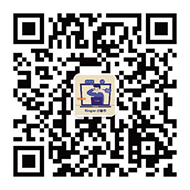By MIFLORA M. GATCHALIAN, PhD. PFT
CEO, QUALITY PARTNERS COMPANY LTD (QPCL)
Academician Emeritus, INTERNATIONAL ACADEMY FOR QUALITY (IAQ)
Introduction to the second installment of the 5Ms challenge
THE 5Ms Challenge is a simple presentation of what Leaders (i.e. business owners, government officials, community leaders, etc.) can use as a starting point to engage in the heroic act of actively contributing to the country’s quest for “national quality improvement”, the stepping stone towards economic upliftment.
Achieving success in this endeavor implies a substantial growth in economic performance, driven by the concerted and genuine commitment of leaders to foster sustainable progress in their respective fields. It starts with Leaders in all walks of life from all regions of the country committing themselves to the 5Ms Challenge which is to engage in quality improvement in their own personal area of responsibility. The initial Challenge calls on Leaders to commit to “continuous quality improvement” hence, the first Challenge is labelled as Make 2025 (1stM). This is followed by the second challenge, Mind-setting (2ndM); then Measuring (3rd M), Motivating (4th M) and Mobilizing (5thM). The last two “M’s” will be the third installment of the “5Ms Challenge to Leaders” in this journal.
Definitely, the “quality challenge” is still a DREAM, but with time and a sense of purpose, dreams do become realities especially when seriously designed approaches are given the opportunity to be proven. YES, it requires time, money, and effort, as well as deep commitment. It should also be emphasized that the progress of an enterprise directly benefits the Company as the Leaders and Team contribute to total business growth. It mainly seeks for well-planned actions dictated by the Leader’s quality MINDset which critically provides the solid foundation upon which the search for excellence is built.
The quality challenge also requires Leaders to pursue continual improvement with full determination, commitment, and unwavering support. This can only happen through the assurance of a sustained Quality Mindset, beginning with the Top Leader and cascading down to every level of the organization. The concept needs considerable study, deliberation, planning and organizing to ensure the clarity of the total approach, and when completed, should be piloted simultaneously, nationwide. It is ideal to start through the leaders of small and medium enterprises (SMEs) in all regions across the country. A project of similar nature conducted by the Philippines’ Department of Science and Technology had been successfully completed in 2024 under Dr. Renato Solidum, the current DOST Secretary who continued with full support the project initiated by his predecessor, Dr. Fortunato de la Peña.
Second challenge: MIND-SETTING (2ndM)
Mindset, which refers to a person’s set of beliefs, attitudes or mental inclinations, has a profound effect on one’s activities at home and at work. The mind accumulates experiences from birth to the present and basically shapes one’s character. The nature of the latter could greatly impact inter-personal relationships at the workplace.
The International Organization for Standardization (ISO) defines quality as “the ability of a complete set of realized inherent characteristics of a product, system or process to fulfill requirements” (AJA, 2004). This definition relates to outputs resulting from controlled processes which ensure consistent customer satisfaction through the sustained fulfillment of their requirements.
A company practice referred to as Total Quality Management (TQM) is considered favorable to sustainability of meeting “customer requirements” which ultimately leads to customer confidence and satisfaction. TQM is generally defined as “a set of management practices throughout the whole organization, geared to ensure the organization consistently meets or exceeds customer requirements” (Goetsch and Davis, 2000). As such, the organization’s mandate should be to build a conducive environment for TQM to be initiated and then successfully nurtured. Thus, the leadership would require a workplace that promotes the development of a person’s “quality mindset” urgently needed to support the quest for TQM.
Principles of TQM. For TQM to be effectively structured and sustained, a deep knowledge of its basic principles must first be thoroughly reviewed, fully appreciated, and then embraced as the foundation for its proper development. Spearheaded by the leadership, the journey towards TQM, should be strategically planned to ensure a comprehensive and clear understanding of its principles is filtered down to all the members of the company. Figure 4 (the first installment ended with Fig. 3) presents the acronym ACCEPT, easy to understand, yet difficult to implement unless completely convinced that these would serve as guide for everyone’s behavior in the workplace. Mainly based on the definition of quality, “meeting customer requirements” is an imperative to be met and thus, Figure 4 shows that a person must first and foremost “Aim for customer satisfaction”. Proper sharing of this commitment requires effective Communication to develop a common understanding and acceptance of ideas and practices that pave the way for better coordination of activities. When both Communication and coordination are in place, rapid progress in the quest for TQM could be observed through visible signs of people’s enhanced Commitment to the Leader’s directions with subsequent strengthening of cooperation towards continual improvement. These practices (A, C, C in Figure 4) are urgently needed to ensure sustainable progress in the search for excellence, which is the ultimate goal of the next three principles E, P, T in Figure 4. These should first be carefully planned, then executed.
Since a person’s MINDSET is an accumulation of experiences from birth to the current situation, then it is essential that one’s MIND be continuously Empowered or enriched with new knowledge. This strength leads to building the capability to engage in Problem-solving, important in decision-making. It is thus, critical that a person’s self-improvement opportunities must be continuously assured through time. As such, opportunities for Training at all levels should be made available as often as possible in the organization, since “Training for quality is forever” (see Figure 4).

Importance of mind-setting. Perhaps one of the hardest challenges that Leaders face in life at work is the realization that “Modelling” quality performance is a personal responsibility. It is characterized by pragmatism which in due time should be acquired by everyone else in the organization.
The late Dr. F.L Jocano (1999) a noted Filipino anthropologist, said that “Cultural ways, understood and appreciated, can be used to motivate and influence people to shift from their old habits to new ways of thinking, believing and doing things” as he described how a person’s “mindset” actually works. Figure 5 presents a Filipino cultural value called “malasakit” (compassion) which is a mindset generally associated with good traits such as those shown in Figure 5. Leaders with “malasakit” are viewed as possessing traits important to the constituents at all levels. Through time, these traits are seen to describe a leader with “malasakit” as observed by other Leaders and the rest of the Staff. Largely through “leadership modelling”, these “mindsets” are seriously and purposely encouraged to trickle down to everyone else in the organization, especially when the leadership provides a favorable environment for the followers to imitate the leader. This can happen only if the model-leader shows commitment and dedication to have such processes and actuations transferred from the top to the bottom level in the company. The ultimate goal of this long-term yet sustainable modelling exercise of the Leader is to eventually make “quality a way of life” (QWL) at home and at work. After a period of time, this will ultimately describe a “culture of quality” seen through the imbibed pleasant behavior of the employees. One approach to sustain this culture, is to be constantly reminded that the first principle of TQM, as presented in Figure 4, is “Aim for customer satisfaction”. The concept of a customer starts with oneself, then extends to the people at work and finally, with the end-user of products or services. Quality is thus, in a person’s “state of mind” and as such must be a personal pursuit by committed individuals. This makes ‘mind-setting” a very important contribution in the quest for excellence at home and at work.

Personal challenge to leaders. For committed leaders, “mind-setting” towards quality must be a personal challenge since it is from them that the commitment for “change” towards excellence is initiated. The Leader serves as the model for the right approaches to excellence through proper sharing of ideas, information and daily action in the journey to excellence at home and at work. This is why it is repeatedly mentioned that assistance from knowledgeable and experienced mentors should be solicited, at the earliest time possible, to provide the much-needed coaching in the journey towards excellence.
Third challenge: Measuring (3RDM)
One of the most important TQM principles is “continual improvement” especially since a quality output is very much dependent on the success of controlling the process. This can be typically seen in Figure 6 which shows the overall operations that lead to the output received by the consumers or end-users. Note that resources cover the 6Ms of quality starting with Manpower (see Figure 6) in practically all operations in the company. This is especially true in those engaged in manufacturing. The remaining 6Ms of company resources include: Materials (2), Methods (3), Machines (4), Measurement (5) and Mother Earth (6). The proper integration of these resources in the different processes is necessary to products or services expected by the customers. Therefore, to meet customer requirements, the “voice of the customer” must be heard before the start of product innovation and throughout its manufacture. Hearing the voice of the customer implies “measurement” of the characteristics or attributes identified as part of the changing needs and expectations of these potential end-users as shown in Figure 6. Based on the measured customer requirements, manufacturing processes are developed utilizing all the 6Ms Resources through various approaches to “measurement” (Gatchalian, M.M.2018) from data collection, to analysis of results, data analysis and interpretation. Thus, the urgency of “statistical methods” is emphasized, since this provides the necessary information about the performance of the process through time.


Importance of measurement. Maintenance of “customer satisfaction” depends on the extent with which processing operations had been effectively controlled. This can only be achieved if there is focus on “continuous improvement’ based on efficient measurement of identified quality characteristics at defined stages of the operations. Such measures provide the basis for identifying then implementing “improvement”. Unless required “measurements” are properly done, there would be no basis for change especially when directed towards “improvement”. Figure 7 simply shows how measurements can ensure proper monitoring of the improvement processes regularly done in the operations. Note how UCL (Upper Control Limit) and LCL (Lower Control Limit) measure the extent of variation of a critical characteristic statistically monitored through time. Effective control and eventual improvement can only happen if measurements are properly collected and monitored. Without properly planned and executed “measurements” quality monitoring is close to impossible. This is a big Challenge to leaders and deserves the attention required.
References
AJA Registrars Inc. 2004. ISO 9001:2000 Standard, Auditor Transition Training Course. Madrigal Business Park, Acacia Ave. Ayala Alabang, Muntinlupa, Philippines.
Gatchalian, M.M. 2018. “Innovation Management in Food Product Development”. FoodPacific Manufacturing Journal. Vol. XVIII NO. 2, (March) ISSN 1608-7100. Ringier Trade Media, Ltd. Hong Kong
Goetsch, David L and Davis, Stanley B. 2000. Quality Management - Introduction to Total Quality Management for Production, Processing and Services. 3rd Ed. Prentice Hall, Columbus, Ohio. USA
Jocano, F. Landa. 1999. Management by Culture: Fine Tuning Modern Management to Filipino Culture. 2nd Ed. PUNLAD Research House, Inc. Metro Manila Philippines

 iConnectHub
iConnectHub
 Login/Register
Login/Register Supplier Login
Supplier Login


























